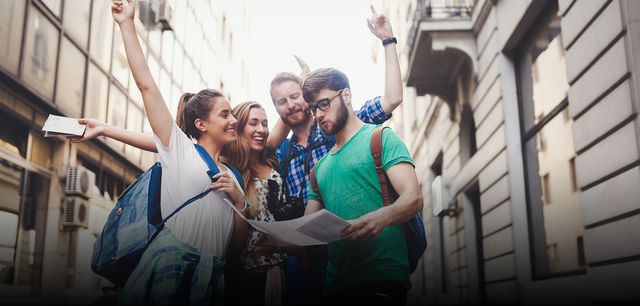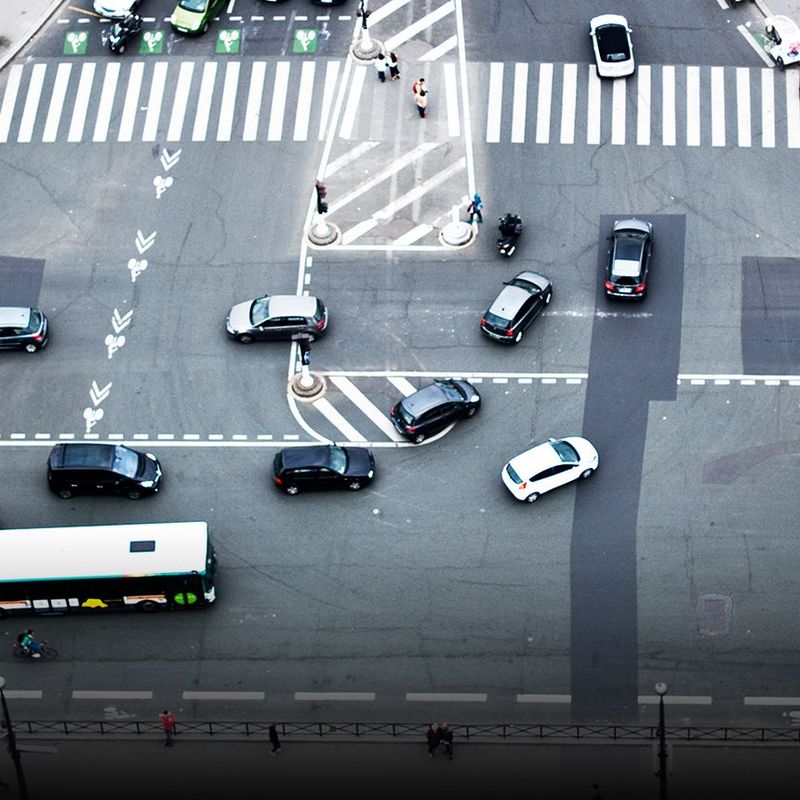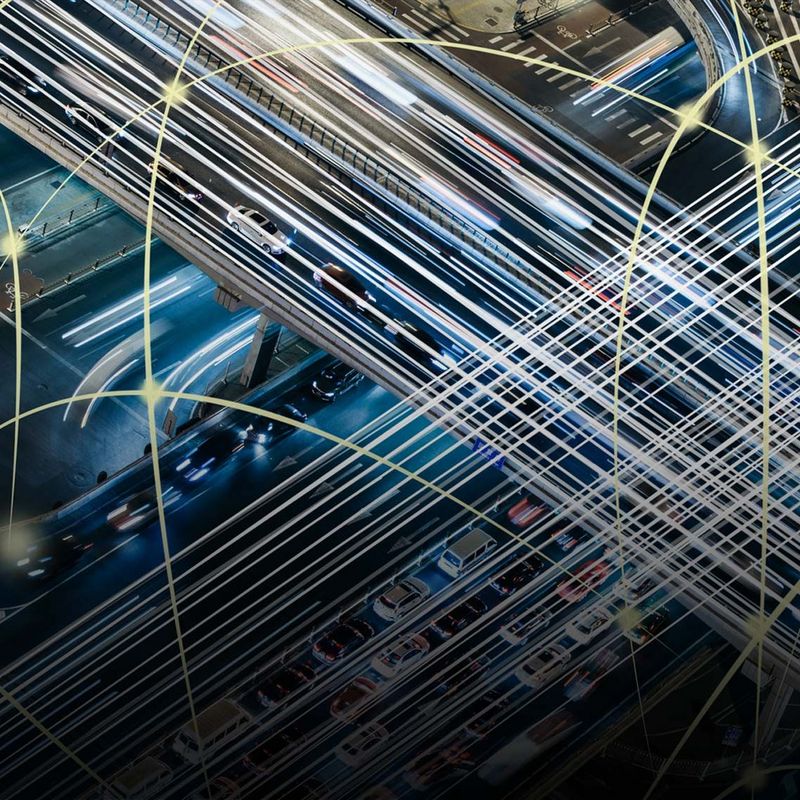28. July 2022
These days, we are guided to our destination on many of our journeys by Google Maps and the like. If our Internet connection goes down, we can quickly feel lost. Is the predominance of navigation apps causing us to lose our sense of direction? Not really – and we can even train it back up to full effectiveness.
Those of us who are of a certain age will still remember that there was once a time – perhaps 15 years ago – when we had to rely on paper maps to find our way through cities or get to our holiday destination. Nowadays, however, it’s Google Maps and friends which get us to work, the station, our new dentist or our evening out with friends. But what does outsourcing it to apps mean for our sense of direction? Are we at risk of losing it?
Yes and no, is the answer of neuroscientist Simon Eickhoff, head of the Institute for Systemic Neurosciences at the University of Düsseldorf. For one thing, there isn’t literally any such thing as a sense of direction. Physical senses like hearing, smelling or tasting don’t improve or deteriorate depending on how frequently or infrequently you use them. “Unlike these, our sense of direction is a cognitive ability – in other words, it’s a question of practice,” the expert explains. This means that it can be improved – but also unlearnt. To some extent, at least. This is because finding our way around is a bit like cycling or playing tennis. It’s true that we will still be able to do it as before even if we haven’t practised it for a while. “But we’ll find it harder because we’re out of practice,” the neuroscientist explains.
How we find our way around
Researchers distinguish between two ways in which people navigate. “On the one hand, we can learn routes based on landmarks – particular buildings, for instance,” Eickhoff says. Other people use a mental map to find their way. “Some people feel that they can only master one or other of these navigation techniques, but not both. But this isn’t true,” says the neuroscientist. “In principle, anyone can use either strategy.”
Whichever of the two methods an individual prefers is a matter of personal aptitude and individual conditioning: it might depend, for example, on how we were taught the way to school as kids. Some studies indicate that women tend to refer to landmarks and are in general not quite as good as men at navigating. And yet, while the differences are significantly more pronounced in countries like Saudi Arabia, in Scandinavia they are practically non-existent. The researcher’s hypothesis is this: the greater the level of equality between the sexes, the more often women can use and train up their sense of direction.
© iStockChildren as role models: Get on your bike, explore the area and sharpen your senses!
Our environment shapes the way we navigate
Where we live and grow up also has a clear impact on our ability to navigate. This is clearly demonstrated by a large-scale study with 400,000 participants from 38 countries: people who live in the country or in cities based on European designs perform significantly better on average than those who live in cities with grid-like road systems, such as those which are widely found in the US. “People whose main method of travel in such cities is by car will of course be far less challenged and have fewer opportunities to practise than those who walk or cycle through the narrow and winding streets of European cities,” neuroscientist Eickhoff explains.
So, the more complex the environment, the better our sense of direction, right? Only to a degree, is the expert’s qualified response. “The differences between individuals are far greater than the systemic ones,” Eickhoff says. In other words, women from Los Angeles will be a lot better at getting around than men from Rome or a rural area if, for instance, they have the right kind of aptitude, come from a family whose members enjoy finding their way from A to B or do a job which requires them to navigate a lot.
How we train our sense of direction
What is ultimately most important when it comes to our sense of direction is hard to pinpoint. This is because our sense of direction is rather like other skills: if I find something easy, I’ll tend to want to do it more often because it gives me a growing sense of achievement. “Someone who already has a good sense of direction will also tend to rely less on their satnav, training their skills incidentally in the process,” says Eickhoff.
If you really want to improve your sense of direction, then you’ll need to approach the task in the same way, the expert says. In other words, don’t turn to the app. Finding your way to work every day without your satnav will only bring limited returns, however: “After all, routes that we regularly take will be firmly established in our memory.” If need be, we would find our way in our sleep. “If you really want to train your sense of direction, you will have to put yourself in new situations,” the expert explains. Try to find your way to your destination via routes you don’t know or in unfamiliar cities or districts. “You can either use a map or just take a quick look in advance at your navigation app and try to commit the road layout to memory and find your way without help,” Eickhoff advises. It won’t hurt your training to consult the app from time to time to make sure that you’re on roughly the right track.
However, it’s probably not a great idea to use that trip to an urgent appointment to train your sense of direction. “This is because stress is always bad for cognitive performance,” the neuroscientist says. Stress hormones cause us to focus on the physical instead of peak mental performance. This is an evolutionary legacy from the Stone Age, when what mattered was to get away as quickly as possible from the sabre-toothed tiger or to engage it in combat. “We still have exactly the same biochemistry, it’s just that it’s no longer as helpful,” Eickhoff says. So, it should not come as a surprise that even people with a good sense of direction can lose their way in stress situations.
© iStockIf you always use your navigation system, you'll reach your destination - but in the long run at the expense of your sense of direction.
What we can’t do without apps
Eickhoff himself hardly ever uses an app when he is on foot or cycling somewhere. Sometimes he’ll take a map, sometimes not. Except when he’s driving, that is. Then he will generally fire up the app: “After all, Google Maps and the other services do offer us something that, no matter how expertly we may be able to navigate, we can’t have an overview of – the current traffic situation.” Knowing where the longest traffic jams have built up on our way to work or on holiday and how we can best avoid them is something that even the most highly trained sense of direction cannot hope to match.
About Simon Eickhoff:
© Forschungszentrum Jülich
Simon Eickhoff is director of the Institute for Systemic Neurosciences at the Heinrich-Heine-Universität in Düsseldorf and the Institute for Neurosciences and Medicine at the Jülich Research Centre.The neuroscientist focuses mainly on the question of how human brains differ between individuals – in other words, what it is in the brain that makes our skills, characteristics and weaknesses unique to us.






